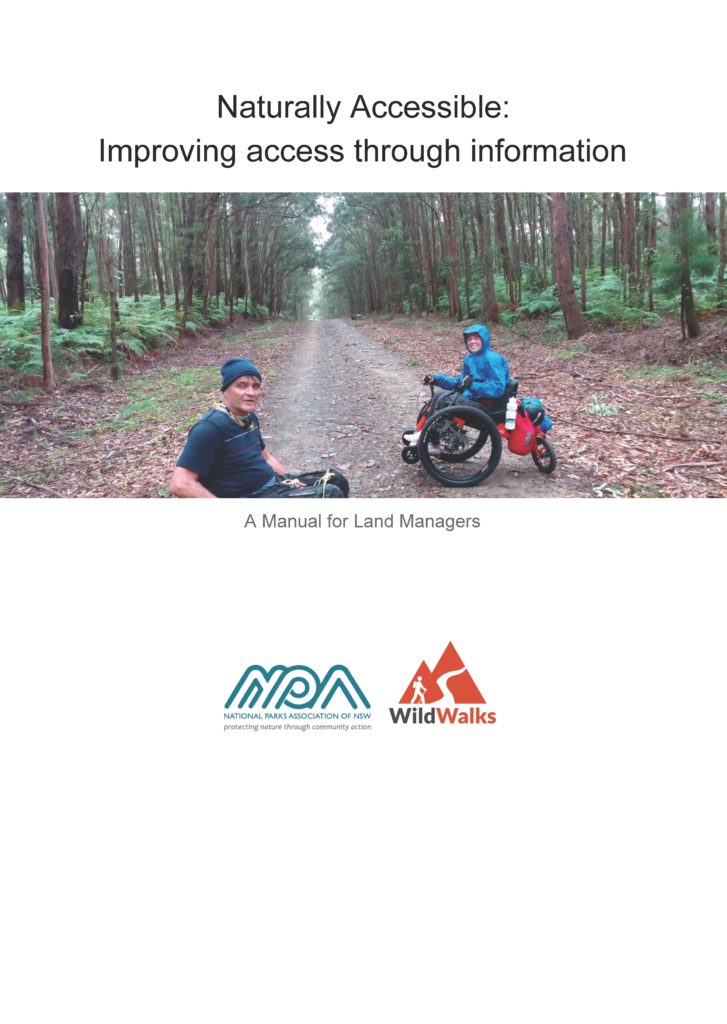Naturally Accessible 1.0 was a 12-month project funded by Family and Community Services. Over the 2016 financial year, we identified what sort of bushwalking track information is useful to people with mobility restrictions and how to convey it effectively.
We interviewed a range of active bushwalkers with mobility restrictions to learn more about their experiences and understand the barriers that they face on a bushwalking track. We prototyped different ways of displaying information, and produced a track-note template with Naturally Accessible track informational overlayed on top of standard bushwalking notes.
We took these learnings and produced a manual that is a practical guide for land managers (and others) to document information about bushwalking tracks and present it in a usable way to their visitors.
Click on image to download.
The first section gives background and context – think of this as a crash course in disability awareness training – and sets the scene for why information provision is such a powerful way of improving access. The second part of the manual runs through key track features and barriers that people typically encounter on the track; for each, we explain what information is critical to capture and why. We also include a short section at the end on how to present the collected data to visitors, right through to promoting the walk successfully.




